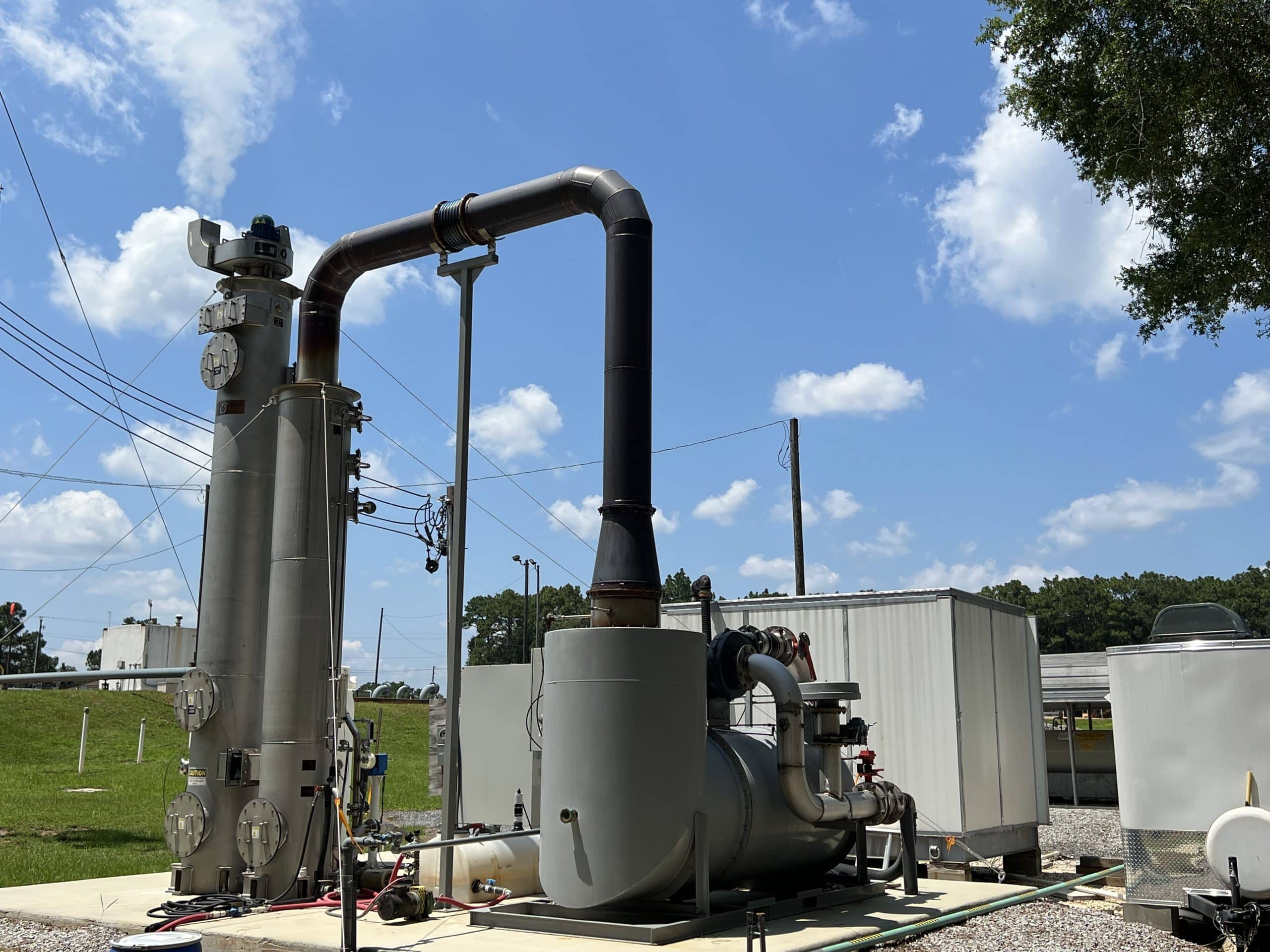
Soil and Groundwater Remediation of Large Groundwater Plume, Gulf Coast
PPM was retained by a major energy company to assist with remedial efforts at an odorant release site on the Gulf Coast where contaminants released to groundwater had migrated almost half a mile from the source area onto offsite properties. The first phase of the project included a review of historical data, chemical fate and transport, effectiveness of the current pump and treat remediation system installed along the downgradient property boundary, and predicted time and cost to achieve site closure. The second phase of the project included performance of pilot studies to evaluate the following:
- Feasibility and potential effectiveness of utilizing Soil Vapor Extraction (SVE) in the source area where the release occurred to remove reduced sulfur compounds from the vadose zone.
- Feasibility and potential effectiveness of utilizing Soil Vapor Extraction (SVE) in the source area where the release occurred to remove reduced sulfur compounds from the vadose zone.
- Feasibility and potential effectiveness of reinjecting ozonated water generated from the current pump and treat system into the aquifer at a location upgradient from the recovery wells.
- Feasibility and potential effectiveness of “pulsing” (intermittent operation) of the current P&T system and using the current ozone generator during the downtime cycle to provide oxidant for injection into the aquifer via sparging at an upgradient location.
The preliminary SVE pilot test provided positive results and these findings were used to design and implement a more comprehensive Dual-Phase Vacuum Extraction (DPVE) and insitu chemical oxidation (ozone sparge) pilot test. The findings from these tests indicated that SVE and ozone sparging would be an effective means of remediating site soil and groundwater, and PPM designed and installed two separate systems to address the area where the release occurred (source area), and the groundwater plume between the source area and the existing downgradient pump and treat system. The following tasks were completed:
- Boring clearance in sensitive areas using ground-penetrating radar and vacuum excavation equipment
- Installation of 45 ozone sparge points to depths of 55-80 feet
- Installation of nine SVE wells, six monitoring wells, and three ozone monitoring wells
- Design, installation and operation of three ozone sparge generators, an SVE system, and vapor treatment equipment
- Securing of Underground Injection Control permits
One remediation system was brought on line in the fall of 2020, and the second in January 2021. After 18 months of operation, the groundwater plume size was reduced by 90%. Concentrations continue to significantly decrease, and PPM’s solution is anticipated to significantly reduce the time to achieve site closure.
Project Highlights
- Analysis of complex sub-surface environment
- Review of 10 years of environmental data
- Evaluation of existing remediation systems and pilot testing of remedial alternatives
- Design, installation and operation of large ozone sparge and SVE systems
- Significant reduction in contaminant concentrations and plume size in short time period.

